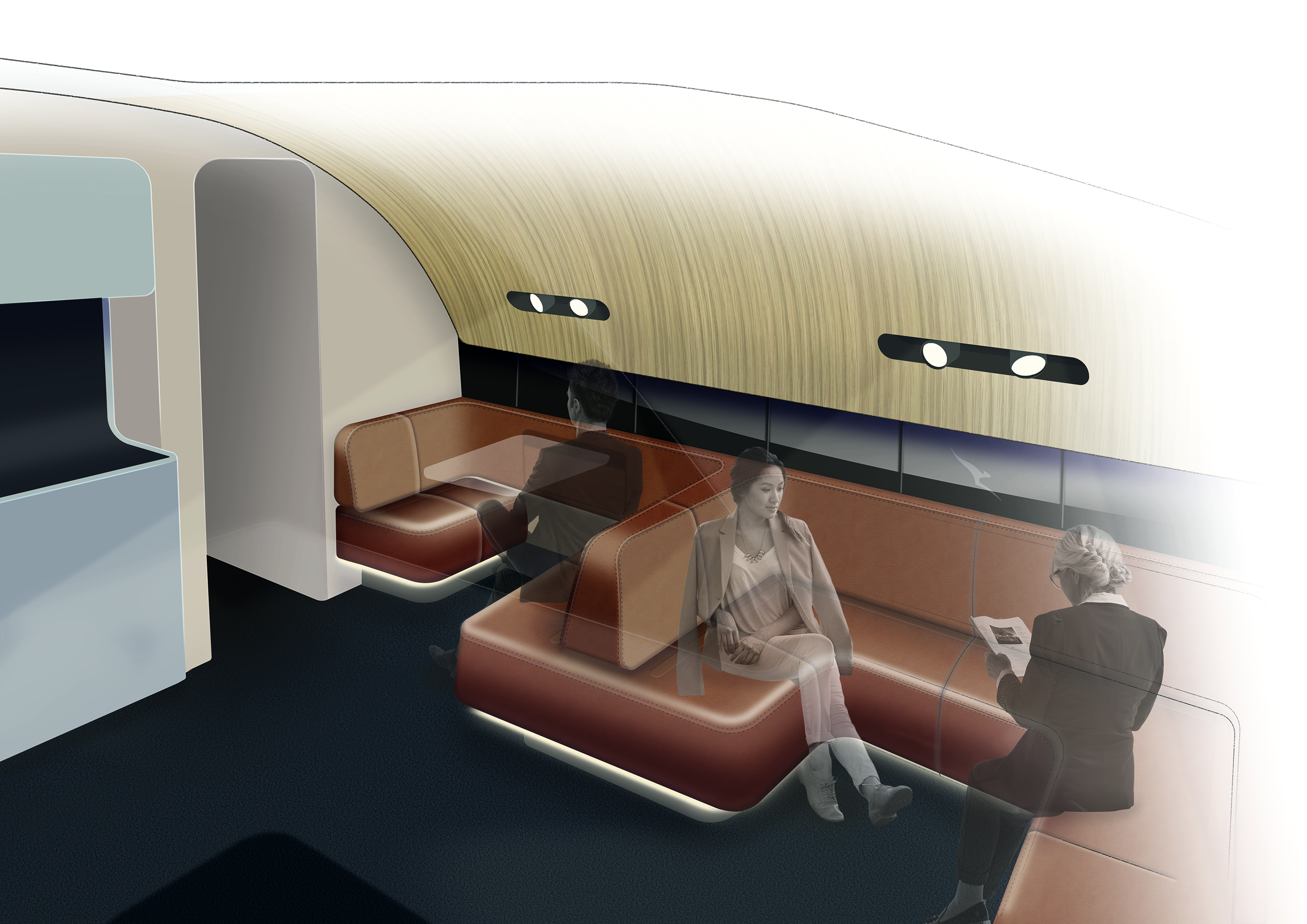|
Qantas has unveiled plans to increase the
capacity of its 12 Airbus A380s.
The multi-million dollar upgrade will see a
change in the seat mix on the popular super jumbos to meet increased
customer demand for premium cabins on flights to the US, Europe
and Asia.
Structural changes are focused on the upper deck
where 30 Economy seats will be removed and some partitions and a
crew workstation rearranged to use space more effectively.
The
changes
allow for an additional six Business Class and 25 Premium Economy seats, increasing the overall seat count on the aircraft by one
and increasing premium seating by 27%.

Other key
elements of the A380 refurbishment program include:
- Replacing
Business Class Skybeds with the latest version of Qantas� Business
Suites. Every seat
gives direct aisle access and allows better use of cabin space
compared with the Skybed.
- Installing the airline�s all new
Premium Economy seat in a 2-3-2 configuration. This seat is almost
10%wider than the model it replaces and will debut on the
Dreamliner later this year.
- Reconfiguring the front of the
A380�s upper deck to redesign the passenger lounge to provide more
room for First and Business Class customers to dine and relax.
- Enhancing First Class, which remains in its current configuration
on the lower deck. Each suite will be fully refurbished, including contoured cushioning and a larger, higher resolution entertainment
screen.
- Updating Economy with new seat cushions and improved
inflight entertainment.
Work on the first A380 is expected
to begin in the second quarter of calendar year 2019. All 12
aircraft will be upgraded by the end of 2020. The design
integration will be managed by Airbus.
�Customers love the A380. This upgrade is a major
investment in putting the next generation of seats on the aircraft
as well as more creature comforts to maintain its status as one of
the best ways to fly,� said Qantas Group CEO, Alan Joyce. �We�re seeing
increased demand for Premium Economy and Business Class on the
long haul routes that the A380 operates, including from people
using their Qantas points to upgrade. When more travellers
experience these new seats, we expect that demand will keep
rising. Working with Airbus we�ve been able to achieve a
very efficient layout on the upper deck. Using this space to
increase the proportion of premium seating improves the revenue
potential and the overall economics of the aircraft. When
you combine this upgrade with the other investments we�ve been
making in new aircraft and new cabins, it will give us consistency
with our premium seats across the A380, A330 and incoming 787
Dreamliner.�
Some elements of the upgrade
will be rolled out later this year, including a memory foam
mattress and pillow menu in First Class.
Qantas is
continuing to investigate new technology to offer fast Wi-Fi on
its international routes. A trial on the A380 in 2012 showed low
levels of take-up due to slow connection speeds over remote areas
of ocean. Fast domestic Wi-Fi has become a reality only recently
due to new technology and next generation satellites serving the
Australian mainland. Qantas intends to be the first Australian
airline to offer next generation Wi-Fi on international routes as
it becomes available.
Qantas has also flagged its A380s will be
operating more regularly on routes to Asia, with the 787
Dreamliner taking on the Melbourne-London route (via Perth) and
freeing up some A380 flying time.
The capacity of Qantas
A380s after the upgrade will be: 14 First Suites (unchanged), 70
Business Suites (up by six), 60 Premium Economy (up by 25) and 341
Economy (down by 30) for a total of 485 passengers (up by one).
|
Headlines: |
|
See latest
HD Video
Interviews,
Podcasts
and other
news regarding:
Qantas,
Airbus,
A380.
|
